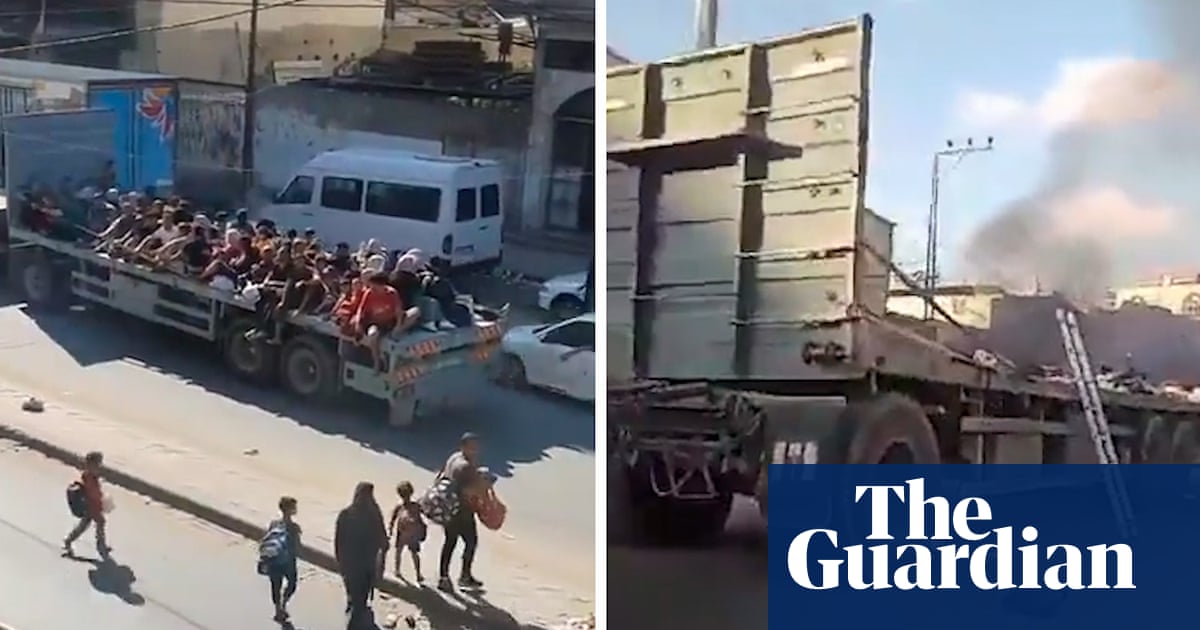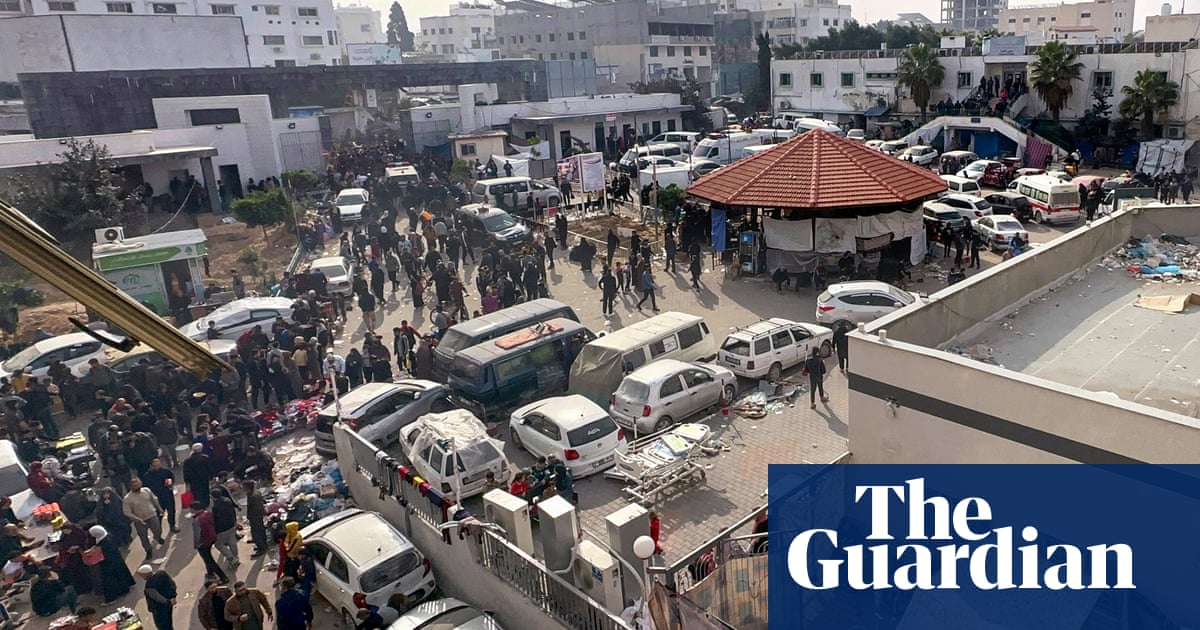
A convoy of vehicles carrying fleeing civilians in Gaza that was hit by a deadly airstrike was travelling on one of the two roads identified by the Israeli army as “safe routes” to the southern half of the strip, according to analysis.
The Friday afternoon bombing in Gaza City, which killed a reported 70 people, including children, and which Hamas blamed on Israel, occurred on Salah-al-Din Road, a main thoroughfare in the overcrowded enclave, home to a trapped population of 2.3 million people.
The Forensic Architecture investigative unit at the Palestinian human rights organisation, al-Haq, used aerial photos and social media posts to geolocate the site of the strike, sharing its findings with the Guardian. The BBC’s Verify unit came to the same conclusion.
Video and pictures of the aftermath of the attack show 12 dead bodies, most of whom are women and children, the youngest about two years old, and several damaged vehicles.
The Palestinian health ministry said that 70 people were killed on the road, which was filled with traffic as Palestinians tried to adhere to Israeli orders given early on Friday to evacuate the northern half of Gaza.
Shadows and the position of the sun suggest the attack on the civilian convoy occurred at about 5.30pm. At 6.03pm, in social media posts, the Israel Defense Forces (IDF) identified the exact same road in an infographic as the safe route to follow the Israeli evacuation directive for about half of the strip’s population to travel south of the Gaza River, which is just south of Gaza City.
Conflicting timeframes for safe passage communicated by the IDF, and the bombing of Salah al-Din Road, a supposedly safe route, have led many people still in northern Gaza to conclude it is not safe to leave their homes.
The IDF declined to comment on the specifics of the incident on Friday. It said: “The IDF follows international law and takes feasible precautions to mitigate civilian harm, including specific actions taken yesterday and today to urge civilians to relocate towards southern Gaza.”
Israel has also blamed Hamas, the militant group that controls the strip, for preventing the population from leaving: the militants have urged residents to “hold on to your homes and land”.
Hazem al-Enezi, the director of the Mubarrat Al Rehma orphanage in central Gaza City, said he could not move the children he looks after even if it were safe to do so. “We have 27 kids living here, nine of them are under 10. Normally we have 25 staff, but it is only me and one other careworker right now because of the situation,” he said when reached by phone.
“You have to understand, several of our children have physical disabilities and special needs, they are already scared and traumatised. There is no safe passage and no safe place for them anywhere in Gaza.”
Salah al-Din Road and the strip’s coastal highway have both since been identified by the IDF as safe routes for people to move to locations south of the river. The message was passed on in more social media posts, text messages sent to people in Gaza, and pamphlets dropped across the strip by air early on Saturday. The UN has warned that the order to flee en masse is impossible to carry out quickly.
It is not known, however, how many people have received the messages, as electricity has been cut and communication lines have been shaky since Israel began bombing the strip on Saturday in response to massacres committed by Hamas, the militant group in control of the territory, in southern Israel last weekend. The attacks killed 1,300 people. In Gaza, more than 2,200 people have been killed in the most intense airstrikes Israel has ever launched on the enclave since Hamas seized control in 2007.
The unprecedented evacuation directive is almost certainly a prelude to a full-scale ground invasion by Israeli forces designed to root out Hamas. The airstrikes have already caused a humanitarian catastrophe, and more bloodshed on both sides is likely after the imminent ground invasion.
The Rafah crossing into Egypt was supposed to open for foreign and dual nationals to leave the strip on Saturday afternoon, but by sundown remained shut.








